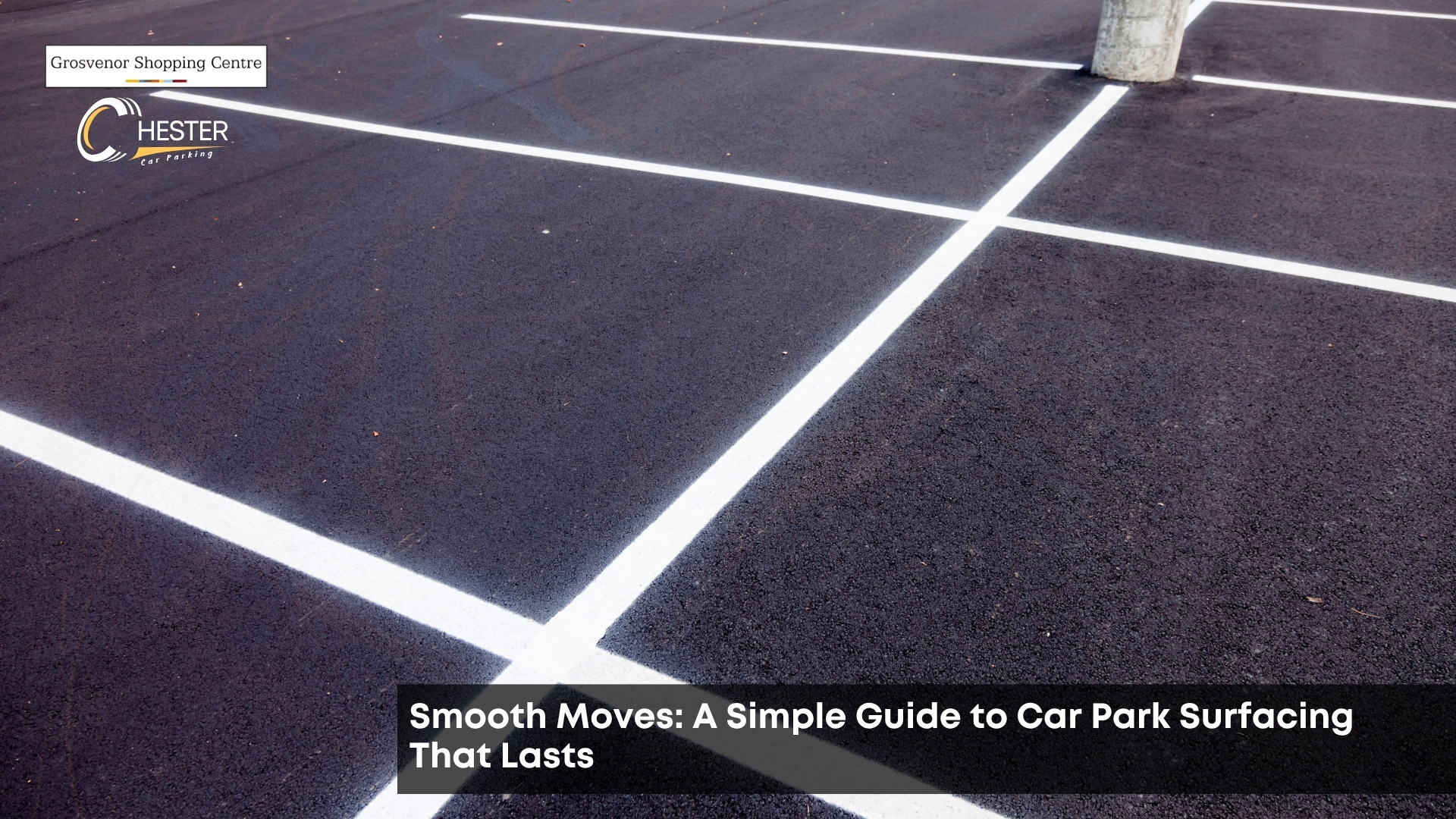Smooth Moves: A Simple Guide to Car Park Surfacing That Lasts
Ever wondered what makes a car park smooth, safe, and built to last? Car park surfacing plays an important role in determining the long-term performance of a parking area. It affects grip, drainage, and even the overall appearance of a space, including its cleanliness and modernity. Whether you’re designing a small surface car park or planning car park resurfacing for a busy site, the materials and methods you choose will make a real difference. At Car Parking Chester, we help clients make better choices for long-term value and performance. Now, let’s take a closer look at why surfacing matters so much.
What Is Car Park Surfacing and Why Does It Matter?
Car park surfacing is the layer that covers the ground of a parking area, providing a stable and durable surface for vehicles to park on. A good car park surface reduces wear, supports drainage, and enhances safety for both drivers and pedestrians. Without quality surfacing, cracks, puddles, and potholes quickly become a problem. This is why businesses, councils, and private owners turn to trusted experts like Car Parking Chester to make sure things are done properly. And speaking of surface types, here’s what you’ll typically find in the UK.
Which Surface Types Are Common in UK Car Parks?
The most common car park surfaces in the UK include tarmac, asphalt, concrete, and gravel. Each surface has distinct strengths and weaknesses, depending on its location, budget, and intended usage. Tarmac is smooth and easy to maintain, while concrete lasts longer under heavy loads. Gravel is cheaper but less stable in wet weather. Many sites also use a mix of car park surfacing materials to suit different sections. Choosing the right material starts with knowing how they all compare.
How Do You Choose Between Asphalt, Concrete, and Gravel?
Choosing between asphalt, concrete, and gravel depends on the size of the car park, the traffic volume, and the weather conditions in your area. Asphalt is ideal for busy locations with constant traffic, while concrete provides long-term strength. Gravel suits smaller or temporary sites but may need regular topping up. At Car Parking Chester, we recommend selecting car park materials based on your specific needs and long-term plans. Still, some clients wonder if tarmac is the default solution.
Is Tarmac Still the Go-To for Busy Car Parks?
Yes, tarmac remains one of the most popular choices for busy car parks due to its smooth finish and quick installation time. It is also easy to repair, which makes it ideal for high-traffic areas where downtime must be minimal. Many commercial sites and retail parks across the UK rely on tarmac for this reason. However, even the toughest materials need to withstand traffic and weather year-round.
Can Surfacing Materials Handle Heavy Traffic and Weather?
Yes, when chosen and installed correctly, car park surfacing materials can withstand heavy traffic and changing weather conditions. Concrete and high-grade asphalt perform particularly well in areas with frequent use and rainfall. The key is proper preparation and high-quality materials. Car park surfacing that cuts corners may save money in the short term, but it fails under pressure. Regular care also plays a crucial role in achieving long-lasting results.
How Often Does a Car Park Surface Need Maintenance?
Car park surfaces typically need light maintenance every one to two years and resurfacing every five to ten years, depending on usage. Maintenance can include sealing cracks, repainting markings, and fixing potholes. Staying on top of small issues early prevents larger, more costly repairs later. At Car Parking Chester, we offer maintenance plans that protect your investment while keeping your surface looking fresh and clean. Of course, water drainage is one factor that affects the lifespan of your surface.
What’s the Role of Drainage in Long-Lasting Surfaces?
Drainage is vital in car park design because standing water can damage surfaces and weaken their structure over time. Good drainage systems prevent pooling, reduce freeze damage in winter, and protect vehicles from water spray. Whether using channels, gullies or sloped designs, drainage should never be overlooked. A dry surface is also safer for pedestrians and prevents the buildup of moss or oil.
Are Eco-Friendly Surfacing Options Worth Considering?
Yes, eco-friendly surfacing materials are worth considering if you want to reduce your environmental impact. Permeable pavements, recycled tarmac, and resin-bound surfaces all offer greener alternatives to traditional materials. These help with drainage and reduce the heat island effect in urban areas. Many forward-thinking car park building projects now include green surfaces as a standard feature, making them an excellent choice when exploring car parking ideas for home. The result is not only better for the planet, but often more attractive as well.
How Can Good Surfacing Improve Safety and Appearance?
Good surfacing improves safety by providing grip for tyres and shoes, ensuring clear visibility of road markings, and creating a stable area without trip hazards. It also enhances the appearance of your site, making it look clean, modern, and well-maintained. A neat car park can create a strong first impression for customers, tenants, or employees. With Car Parking Chester, you get surfacing that protects and presents at the same time. To make the most of your space and manage it efficiently, consider using a space finder. Still wondering what makes a surface truly durable?
Is Smart Surfacing the Secret to a Durable Car Park?
Yes, smart surfacing using the right materials, expert installation, and regular upkeep is the secret to a durable car park. From car park surface layers to drainage and safety features, every choice counts. When you combine these factors, you get a space that works well and lasts for years. To learn more about how these elements come together for long-term results, continue reading. At Car Parking Chester, we help businesses and homeowners choose surfacing options that stand the test of time while still fitting their budget.


Leave a Reply